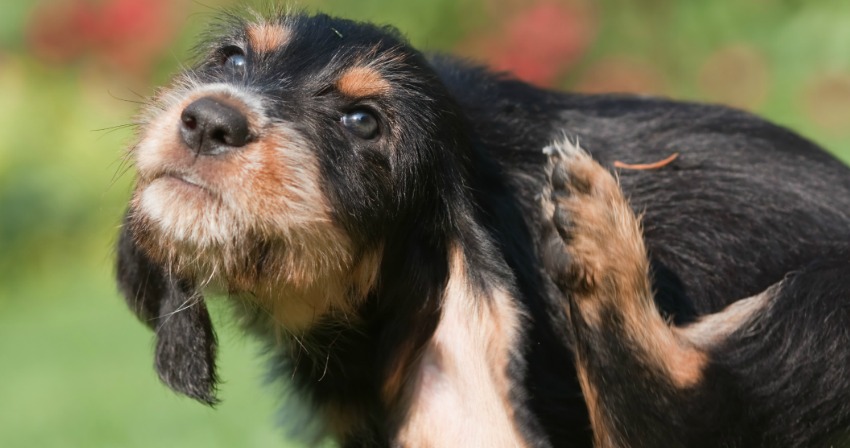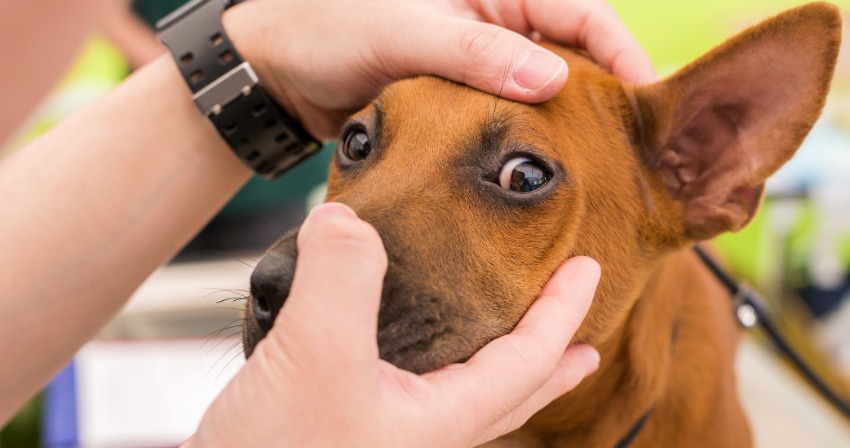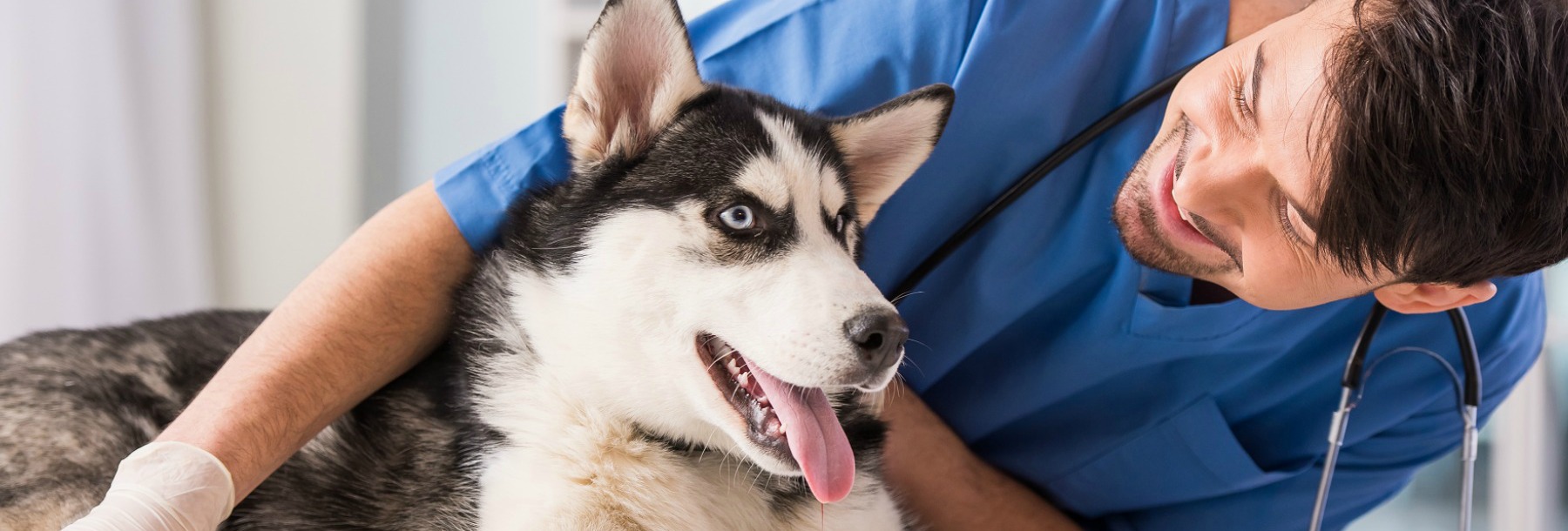As a dog groomer, your time and energy is spent ensuring the overall health and happiness of your furry clients. This is why a full inspection of the dog prior to grooming is essential! This evaluation will determine if there are any existing skin conditions, potential eye or ear infections, dental issues, or changes in temperament ahead of the grooming session. Armed with the knowledge obtained through the assessment, you can use your expertise to move forward with the grooming session or recommend a visit to the vet instead.
As each animal is different, it is so important to spend a few minutes before any grooming session assessing the dog, running your hands over its fur and using your trained eye to note any issues.
Find out the top 4 things to look out for before grooming a dog to give him the best experience, and to protect yourself as a dog groomer!
Skin conditions
Some dog breeds are more prone to skin conditions than others, but there are some common dog skin problems to look for before you begin to groom any dog:
- Scabies: Found on ears, elbows, and the belly, scabies is caused by mites that burrow under the dog’s skin. Scabies can be soothed by a natural conditioner.
- Flea allergy: Just like humans, dogs can suffer from allergies as well! Some dogs have a sensitivity to fleas, and this shows up on the back of the legs and above the tail. Flea allergies can cause skin scratching, resulting in dog hot spots. As a groomer, you can treat hot spots and eliminate scratching with specific products.
- Skin infection: Infections will show themselves as scabs, thinning hair, blisters, and flakes, and can be indicative of a potential disease. Be sure to inform your client if you notice a skin infection in your pre-grooming assessment, as they will need to consult a veterinarian.
- Open sores: As dogs can be active and spend a great deal of time outdoors, foreign matter can pierce the pads of their feet, which will create infected sores.
When examining a dog before your groom, these conditions should be treated seriously with veterinary attention in some instances. Prior to grooming, let the owner know what your standard grooming practices are, and that additional costs could be required in the case of certain skin conditions. Be careful not to make the mistake of grooming a dog with an existing skin condition, as you could aggravate them!

Changes in temperament
Grooming a dog, specifically brushing and bathing, takes a lot of energy. As a dog groomer, you are a patient and calm person by nature, but it is absolutely critical to maintain a sense of calm as you prepare a dog to be groomed.
To ensure that the grooming process goes smoothly, a dog must be focused and calm. If the dog becomes agitated or excited, grooming can be difficult and potentially dangerous since injury is more likely to occur. Assessing the dog before beginning your grooming process allows you to evaluate whether the dog is ready to be groomed. You can also take note of any changes in temperament ahead of time.
Pro tip: It’s always a good idea to have a pet first aid kit on hand just in case an injury does occur.
Eyes & Ears
Plucking hair from dogs’ ears is a common grooming practice, but it may not be appropriate if there is a potential infection present. Be sure to examine a dog’s ears as part of the inspection to rule out any abnormalities. If there is an accumulation of dead skin or hair inside the ear, or any swelling and discharge, recommend a proper examination by a vet. As a dog groomer, never take it upon yourself to diagnose or try to treat an ear infection. You also need to refrain from plucking any hair from an ear that appears to be affected.
When it comes to eye care, certain breeds are more prone to issues than others. As a groomer, a full inspection of a dog includes the eye area, specifically looking for any discharge, irritation, redness, swelling, or significant blinking. All of these symptoms can indicate potential eye problems, which will need a veterinarian’s care right away.
Use your training expertise to judge the situation and decide whether or not to continue with the groom. If you proceed, be sure to keep the eyes clear of debris and hair after trimming, clean any discharge away with a cotton ball, and explain the process to your client as you go along. They can relay this information to their vet during their next visit.
Keeping the lines of communication open with your client is essential when it comes to caring for their dog’s eyes and ears. Be sure to educate them as you assess the situation, and explain your recommendations for treatment.

Teeth
Oral care is extremely important when it comes to a dog’s overall health, and a groomer’s trained eye can catch potential dental diseases and infections prior to grooming.
Your grooming services can include oral care maintenance, but recommend that owners allow a vet to clean the teeth and gums thoroughly. During your pre-grooming inspection, lift the dog’s mouth flaps to look at the gums and check for redness and swelling, which can indicate an infection. If the dog has a dental condition, grooming is not a good idea and you should recommend that clients visit their veterinarian.
In the case of a mouth that appears healthy and free of any infection or abscesses, use a dental spray and gel to help break down plaque and tartar. Attempting to brush a dog’s teeth that are in any way affected could potentially lead to harm or liability.
If you love the idea of caring for dogs, a career as a dog groomer could be the perfect fit! View a list of dog grooming course offerings at QC Pet Studies here!




I appreciate it when you said that the groomer should make sure that there are no abnormalities in the dog’s ears before grooming or trimming so as to avoid infections. My brother told me that my puppy has some kind lump in his right ear, so this part got my attention the most. What if the groomer proceeded with plucking his ear hair without checking it first? I will surely mention this to him as a head’s up. http://www.dogsrdogsdaycare.com/grooming-bathing